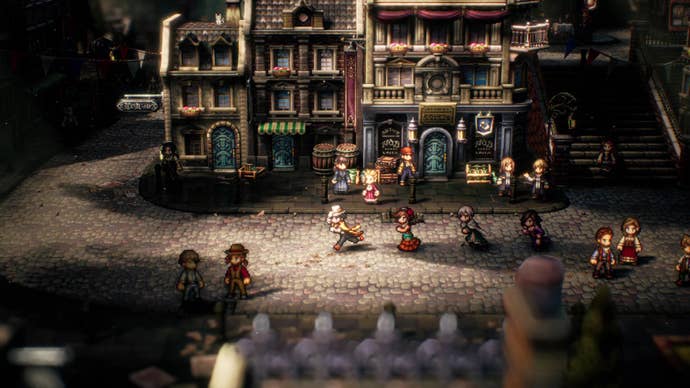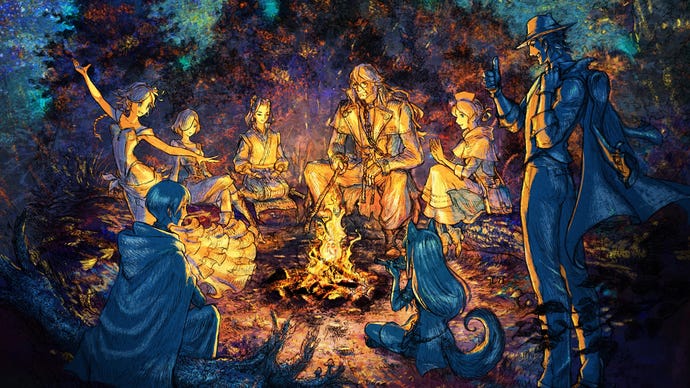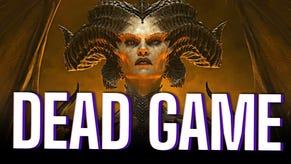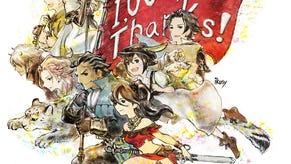Octopath Traveler 2 plays it safe, but it’s subtly better than its predecessor in every way that matters
By taking what worked for the previous game and gently iterating on it, Octopath Traveler 2 offers up a delightful JRPG throwback - with many similar shortcomings to its predecessor.
Video games are reaching that sort of age where throwbacks are a lucrative business. High-profile remakes, remasters and revivals are ten-a-penny now - but one of the most successful is undoubtedly Octopath Traveler, the Square Enix made and Nintendo-published SNES-era style Japanese RPG that gripped audiences in 2018. Now Square Enix is back with a sequel, the succinctly titled Octopath Traveler 2.
Back in 2018, I called the original Octopath Traveler “beautiful, brilliant, and flawed” - and honestly, that description still rather holds up for the sequel. Make no mistake, however: this second game is superior to the first in just about every way that you’d really care about - even if certain niggling shortfalls of the original remain.
Nintendo’s been pushed out of the picture for this sequel, meaning Octopath Traveler 2 is a multi-platform affair from day one, available on PC and PlayStation as well as Switch - but that’s not the only expansion going on here. It’s a larger and more in-depth game in general - and this is offered without dampening the sense of open-ended freedom that was one of the first game’s trump cards.
The biggest trump card, meanwhile, remains on the table: that beautiful HD-2D art style that set eyes and hearts ablaze when it first cropped up a few years ago. But with that art having now migrated to several other titles, Octopath 2 cannot lean on that alone - and so one considers its unique structure with a little more weight.

For the uninitiated, Octopath is so named because there are eight (octo for octingenti - eight in Latin, because Latin is cool, apparently) different player characters to choose from. And it is a choice - you pick which of the crew you’d like to start with, and then after completing their introductory chapter, you’re turned loose into the world to do what you like.
The result is a truly compelling sense of freedom, but also an inevitable sense of listlessness. There’s not nearly as much of the grand world-threatening storylines of genre tradition here. Instead, players experience more intimate stories about each of the members of the cast. You recruit someone, then work through their personal issues.
This is the same across both titles, though what Octopath 2 does a little more successfully is bring things together in a slightly more satisfying way. The individual chapters are dense but fairly swift, and a major change is that the main characters actually exist in pairs - each has a particular ally you’ll recruit who folds into their story. Once paired off, this reveals a new, optional side story - an attempt to address the complaint that there wasn’t enough tying these characters together in the first game.

It sort of works, though also falls short of the sort of party relationships and banter that make many greats of the genre special. This is truly a rock-versus-hard-place problem, however - if you were to intertwine everything to any greater extent than this, the wonderful meandering exploration and any-order recruitment of the cast would be undermined.
As well as abilities in battle, each of the eight leads has a couple of ‘Path Actions’ they can use out in the overworld. This lets you interact with the world in a few more ways, and offers new methods to acquire items, information, allies, or just start fights. Each character has two of these; one used in the daytime, and one at night. You can toggle the time of day at almost any time to aid in your exploration.
I do like the Path Actions system as an idea, but it speaks to the overarching theme in this series of characters - and systems - not interfacing with each other materially. You can tear a path of destruction through towns, robbing and killing, and there’ll never be any consequence. This causes the same sort of uncomfortable itch as traveling around with eight characters who don’t interact very much - it undermines the world.
Combat and progression are the areas that honestly haven’t been changed or tweaked all that much. This is still a great, snappy combat system, helped along in its pace by always-brilliant, pumping battle themes. I love a good job system - and this game has that. The combat is engaging and fun, and it’s thrilling to exploit weaknesses and rip enemies to shreds with well-executed strategies - especially when Octopath Traveler 2 is occasionally unashamedly quite difficult.

That difficulty is a bit of a pain in the backside, mind, and one of the few thorns in the game’s side. I’m all for difficulty in RPGs, but I’m not a great lover of the grind. Even if you are an old-school style RPG, the only solution to a difficulty spike is to grind it out on trash mobs… I think you’ve missed the point a bit. Octopath Traveler 2 trades in gating content behind higher-leveled enemies quite a bit - and all you can really do is walk away and grind ‘til you’re ready. There’s no passive EXP share, either, so the four members not in your cast at any given time will inevitably end up under-leveled.
I can see the logic here - it encourages you to explore the title’s plentiful side content (there’s a good sixty hours of content here, easily), and engage with all characters equally - but after a while, it makes me want to put the game down. This was the same thing that happened with the first game - and it’s the biggest issue that remains yet unaddressed this time around.
With all this said, Octopath Traveler 2 is on balance still superior to its predecessor in more or less every way. It has a denser world with more to do, is the best-looking HD-2D game to date, and smartly addresses a number of complaints from the original. By the same token, however, it’s a shame that other problems from that game remain an issue here - and hold this back from greatness. I wish it’d been a little braver and gone a little further - but a safe sequel to a good game is - surprise - also very good.
Octopath Traveler 2 is an easy recommendation for old-school Japanese RPG nerds - and might even entice the odd newcomer. I wouldn’t quite recommend it over Live A Live, another 2D-HD gem - but it’s pretty lovely nevertheless.








